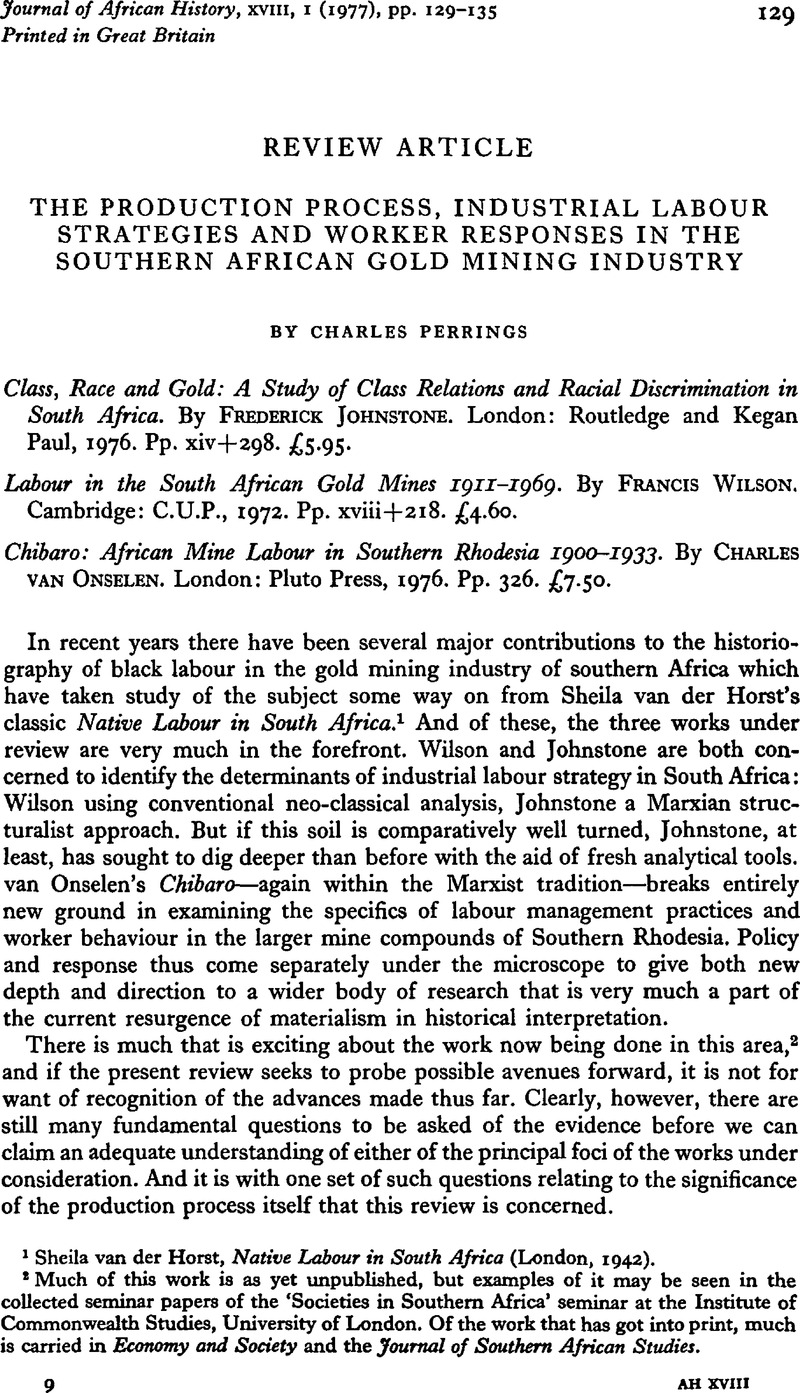Article contents
The Production Process, Industrial Labour Strategies and Worker Responses in the Southern African Gold Mining Industry
Published online by Cambridge University Press: 22 January 2009
Abstract

- Type
- Review Article
- Information
- Copyright
- Copyright © Cambridge University Press 1977
References
1 van der Horst, Sheila, Native Labour in South Africa, (London, 1942).Google Scholar
2 Much of this work is as yet unpublished, but examples of it may be seen in the collected seminar papers of the ‘Societies in Southern Africa’ seminar at the Institute of Commonwealth Studies, University of London. Of the work that has got into print, much is carried in Economy and Society and the Journal of Southern African Studies.
3 This is of course put very crudely but a glance at the pages of the South African Journal of Economics suggests that it is no exaggeration. Perhaps the clearest statement to this effect was in fact offered by Steenkamp shortly before Wilson's own work was published. See Steenkamp, W. F. J., ‘Labour policies for growth during the 'seventies in the established industrial areas’, South African Journal of Economics, xxxix (1971), 97–111.Google Scholar
4 For a review of the differences in geological conditions and mining practices in central and southern Africa, see Pelletier, R. A., Mineral Resources of South-Central Africa, (Cape Town, 1964).Google Scholar
5 Letcher, O., The Gold Mines of South Africa, (Johannesburg, 1936), 366Google Scholar. Stoping methods in South Africa also required considerably more support work in the form of timber cribs than the majority of methods used on the copper belt. See R. A. Pelletier, op. cit. 68–9.
6 The point is made in O. Letcher, op. cit. 418.
7 To this the copper mining industry provides a marked contrast, with mining and metallurgical techniques being adjusted regularly to meet shifts in relative factor prices.
8 Van Onselen might well have made more use of the statistical material in Wilson, N. H.'s The Mining Industry of Southern Rhodesia, (Salisbury, 1933?)Google Scholar, which makes very clear the dominance of the ‘small worker’. The other scholar currently working on the Southern Rhodesian gold mining industry, I. R. Phimister, has also followed Johnstone, although he does pay greater attention to the small scale mines than van Onselen. See for example Phimister, I. R., ‘The reconstruction of the Southern Rhodesian gold mining industry 1903–1910’, The Economic History Review, xxix, 3 (08 1976),Google Scholar
9 In the 1920s, for comparative example, the small copper mines in the Hook of Kafue in Northern Rhodesia were employing Africans at the level of foreman on the charging floor of the smelter at a monthly wage of 30s., when average wages in the copper mines of Katanga were 7s. 6d. See Murray-Hughes, R. A., ‘How crude methods produced copper when other mines shut down’, Engineering and Mining Journal Press, cxvi, 24 (12 1923), 1017–22.Google Scholar
- 7
- Cited by


